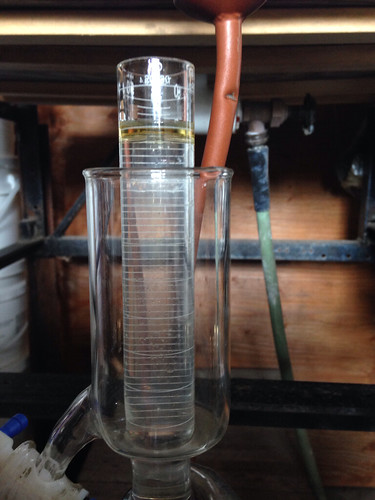Lavender Chemistry

CHEMICAL CONSTITUENTS of LAVENDER
Some 300 molecules were discovered in true lavender's essential oil, that are responsible for its fine, complex yet clear aroma - most of which are trace elements. The major constituents are (the ones in bold are the most dominant/famous ones):
Linool
Linalyl acetate (up to 40%)
Lavandulol *
Lavandulyl acetate *
Cineole
Coumarin
Camphor
1-octen-3-yl acetate
Tricyclene
alpha-Pinene
alpha-Thujene
Camphene
beta-Pinene
Sabinene
gamma-Terpinene
Myrcene
alpha-Terpinene
5-Methyl-3-heptanone
Limonene
Eucalyptol
delta-3-Carene
(E)-beta-Ocimene
Octan-3-one
para-Cymene
Terpinolene
Hexyl-isobutyrate
Neo-allo-ocimene
3-Acetoxy-octene
Hexyl-butyrate
cis-Linalool oxide
Vinyl amyl carbinol
trans-Linalool oxide
Camphor
Dihydrolinalool
(E)-Caryophyllene
Terpinen-4-ol
(E)-beta-Farnesene
alpha-Terpineol
Borneol
Neryl acetate
Geranyl acetate
Nerol
Geraniol
Caryophyllene oxide
alpha-Humulene
Hexyl acetate
alpha-Santalene
As we can see, it mostly contains terpenes, terpene alcohols and esters, and a few alcohols. According to Jeanne Rose "esters are soothing, calming, and fungicidal"; and linalool is an "antibacterial, believes discomfort, diuretic, tones without irritating, stimulates the immune system, sedating"; the latter actions similarly described as initiated by the terpene alcohols as well as toning (The Aromatherapy Book, pp. 158-160).
* Both lavandulol and lavandulyl acetate are insect pheromones, which might explain the abundance of bees observed around lavender shrubs.

